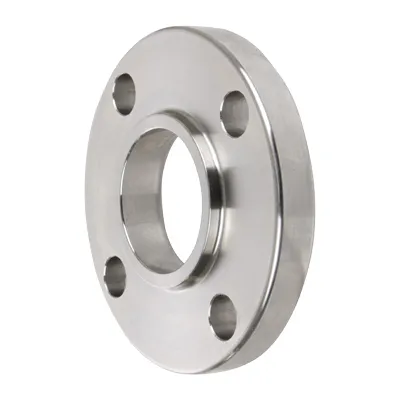-
Cangzhou Yulong Steel Co., Ltd.
-
Phone:
+86 13303177267 -
Email:
admin@ylsteelfittings.com
- English
- Arabic
- Italian
- Spanish
- Portuguese
- German
- kazakh
- Persian
- Greek
- French
- Russian
- Polish
- Thai
- Indonesian
- Vietnamese
- Zulu
- Korean
- Uzbek
- Hindi
- Serbian
- Malay
- Ukrainian
- Gujarati
- Haitian Creole
- hausa
- hawaiian
- Hebrew
- Miao
- Hungarian
- Icelandic
- igbo
- irish
- Japanese
- Javanese
- Kannada
- Khmer
- Rwandese
- Afrikaans
- Albanian
- Amharic
- Armenian
- Azerbaijani
- Basque
- Belarusian
- Bengali
- Bosnian
- Bulgarian
- Catalan
- Cebuano
- China
- China (Taiwan)
- Corsican
- Croatian
- Czech
- Danish
- Esperanto
- Estonian
- Finnish
- Frisian
- Galician
- Georgian
- Kurdish
- Kyrgyz
- Lao
- Latin
- Latvian
- Lithuanian
- Luxembourgish
- Macedonian
- Malgashi
- Malayalam
- Maltese
- Maori
- Marathi
- Mongolian
- Myanmar
- Nepali
- Norwegian
- Norwegian
- Occitan
- Pashto
- Dutch
- Punjabi
- Romanian
- Samoan
- Scottish Gaelic
- Sesotho
- Shona
- Sindhi
- Sinhala
- Slovak
- Slovenian
- Somali
- Sundanese
- Swahili
- Swedish
- Tagalog
- Tajik
- Tamil
- Tatar
- Telugu
- Turkish
- Turkmen
- Urdu
- Uighur
- Welsh
- Bantu
- Yiddish
- Yoruba

Oct . 16, 2024 02:47 Back to list
Bending Techniques for Galvanized Pipes in Construction and DIY Projects
Understanding Bending Galvanized Pipe Techniques, Applications, and Considerations
Galvanized pipe has long been a staple in various industries due to its resistance to corrosion, durability, and cost-effectiveness. Bending galvanized pipe is a common practice that allows for flexible installations, especially in plumbing, electrical conduits, and structural applications. This article will explore the techniques, applications, and crucial considerations involved in bending galvanized pipe.
What is Galvanized Pipe?
Galvanized pipe is made from steel or iron that has been coated with a layer of zinc to prevent rust and corrosion. The process of galvanization involves either hot-dipping or electroplating. Hot-dipped galvanized pipes are immersed in molten zinc, while electroplated pipes are coated with zinc via electrical means. The resulting product is highly durable and ideal for outdoor applications or environments with high moisture.
Why Bend Galvanized Pipe?
Bending galvanized pipe offers several advantages
1. Space Efficiency Bending allows for more compact layouts, particularly in plumbing and electrical systems, minimizing the amount of material needed. 2. Aesthetic Appeal Curved pipes can provide a more polished and professional look compared to straight connections, especially in visible installations. 3. Reduced Pressure Loss In plumbing, smooth bends can maintain water pressure and flow better than multiple fittings and joints.
Techniques for Bending Galvanized Pipe
There are several methods to bend galvanized pipe, each with its own advantages depending on the project requirements
1. Hand Bending This method uses a manual pipe bender, which allows for precise control of the bend radius. For smaller pipes or DIY projects, hand bending can be cost-effective and straightforward.
2. Machine Bending For larger pipes or when a high degree of accuracy is needed, machine bending is preferable. This process uses hydraulic or electric benders to achieve precise angles and consistent bend radius across multiple pipes.
3. Heat Bending In some cases, heating the pipe before bending can facilitate the process, especially for thicker materials. However, care must be taken to avoid damaging the galvanized coating, which provides corrosion resistance.
bending galvanised pipe

4. Notching and Welding In certain applications where tight bends are required, notching the pipe and then welding the pieces together can be an effective approach. This method requires skilled labor and appropriate safety measures.
Applications of Bending Galvanized Pipe
Bending galvanized pipe is valuable across various industries
- Plumbing Curved piping systems are often required to navigate structural obstacles while maintaining efficient water flow within buildings. - Electrical Conduits Bendable galvanized pipes are widely used in electrical installations to run wires through complex frameworks while providing protection against physical damage. - Fencing and Railing In the construction of fences and railings, bends help create uniform shapes and enhance aesthetics. - Furniture Design In modern furniture design, galvanized pipes are often bent to create unique shapes and structures, combining industrial and contemporary styles.
Considerations When Bending Galvanized Pipe
While bending galvanized pipe offers numerous advantages, there are essential considerations to ensure successful and safe projects
1. Wall Thickness The thickness of the pipe will affect its ability to bend without kinking or collapsing. Thicker walls can withstand more force during bending, while thinner walls may require more delicate handling.
2. Bend Radius Different applications require different bend radii. A larger radius is often preferred to maintain material integrity and prevent deformation.
3. Corrosion Risk Whenever the galvanized coating is damaged during bending, the exposed steel is at risk of corrosion. Therefore, it’s essential to inspect the pipe and touch up any damaged areas with zinc-rich paint.
4. Safety Proper safety equipment and practices should always be employed when bending pipes, particularly with heavy machinery.
Conclusion
Bending galvanized pipe is a versatile solution that addresses the demands of various industries. By understanding the techniques, applications, and important considerations associated with this process, professionals can effectively utilize galvanized pipe to create durable and efficient systems that meet their specific needs. Whether in plumbing, electrical work, or construction, the ability to bend galvanized pipe adds a layer of flexibility and creativity to any project.
Latest news
-
ANSI 150P SS304 SO FLANGE
NewsFeb.14,2025
-
ASTM A333GR6 STEEL PIPE
NewsJan.20,2025
-
ANSI B16.5 WELDING NECK FLANGE
NewsJan.15,2026
-
ANSI B16.5 SLIP-ON FLANGE
NewsApr.19,2024
-
SABS 1123 FLANGE
NewsJan.15,2025
-
DIN86044 PLATE FLANGE
NewsApr.19,2024
-
DIN2527 BLIND FLANGE
NewsApr.12,2024
-
JIS B2311 Butt-Welding Fittings LR/SR 45°/90° /180°Seamless/Weld
NewsApr.23,2024











